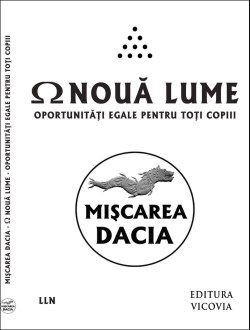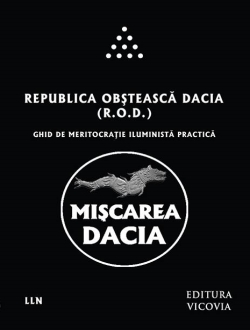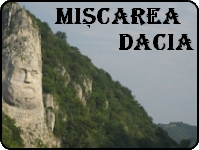Hyperian History Of The World (20th Century, Part 7)
Hyperian History Of The World (20th Century, Part 7)
Cinema was perhaps the most significant art form of the century. It unified the arts magnificently and, though it often got very experimental, it never alienated the popular audience, becoming a key part of the artistic consciousness of ordinary people.
The idea that popular entertainment could now be considered as high art was significant. Something similar happened in the 20th century with music. While classical music grew ever more experimental and obscure, popular music exploded, ceasing to be mere entertainment and leading to one of the most widespread outpourings of human creativity in history.
At the beginning of the century, in New Orleans in the USA, the huge melting pot of cultures led to the development of a new genre of music. Musicians got together in bars and clubs to perform for the people. The music was based on various folk traditions of the various cultures represented in the city, yet the musicians tended to be highly skilled and were often playing what would normally be considered ‘classical’ instruments, such as trumpets, trombones, clarinets etc. The sound of all these instruments playing together was something quite new, especially when anchored by a rhythm section of piano, guitar, bass and drums. The skill of the musicians led to them playing in a far more complex way than the folk traditions called for, often showing their skill in improvised solos, both individually and in groups. This new music became known as Jazz.
Jazz benefitted, as did most popular music of the time, from the new technology of sound recording. The first Jazz record was released in 1917, initially as a kind of novelty, yet soon Jazz grew in popularity and spread all around the US, becoming the soundtrack to the prohibition era of the 1920s.
Whilst beginning as a form of popular entertainment showcasing the improvisational talents of Jazz musicians, such as Louis Armstrong’s masterful trumpet playing, eventually Jazz would develop into a far more serious art form, an entirely new way to compose serious music.
One of the first, and greatest Jazz composers, and one of the most important and significant composers of the century, was Duke Ellington. Ellington was the man who first raised Jazz music to a serious art form, easily rivalling the ambitions of any classical composer. His compositions for large Jazz band became ever more elaborate, combing strictly composed music with elements of improvisation and even pushing the boundaries of recording technology as Ellington’s compositions grew ever longer, requiring more and more records and leading, ultimately, to the development of the long-playing record, which would become the standard format of all popular music.
While classical music was being appropriated by an academic elite, Jazz composers became far more appealing to ordinary people, as they were expressing the struggles of everyday people using a musical language that was both familiar yet also exciting and new.
In the 1940s, brilliant performers such as Charlie Parker and Dizzy Gillespie developed Bebop, a new form of Jazz which emphasised smaller ensembles and intense and highly expressive improvisation. In the 1950s Miles Davis pioneered firstly Cool Jazz and then Modal Jazz, before, in the 1960s, Ornette Coleman, John Coltrane and others developed Free Jazz, which saw the start of Jazz’s descent into avant-garde experimentation. All the while, the true heir to Duke Ellington was the great composer Charles Mingus, who, in 1963, released ‘The Black Saint And The Sinner Lady’, perhaps the most brilliant Jazz composition of all time.
However, at this time Jazz was becoming more and more experimental, eventually falling out of favour with popular audiences. Yet now another new form of music had emerged, Rock And Roll.
US blues musicians had switched to electric instruments after the invention of the electric guitar, which would become one of the most important and expressive instruments of all time. Eventually, in the 1950s, Rhythm And Blues developed into Rock And Roll, a wild, exciting form of entertainment aimed towards rebellious teenagers. The music industry saw the potential of this new form of music and launched Elvis Presley, who became a huge sensation all over the world. Although a phenomenal performer, Presley was ultimately just another pop star, a singer singing songs written by songwriting professionals. The true spirit of Rock And Roll was better represented by the first great composer of Rock music, Chuck Berry.
Chuck Berry truly created a musical revolution. He brought the electric guitar to prominence, switching it to the lead instrument of the rock band and playing it in a brilliant, wild and at times aggressive manner. He also sang songs which addressed the everyday issues of young people, giving them something to strongly identify with. But most significantly, Chuck Berry was singing songs that were his own. With Chuck Berry the composer and the performer became one and the same, and subsequent Rock musicians weren’t taken seriously unless they were the authors of their own material.
Chuck Berry’s wild music, with its themes of adolescent love (and, implicitly, adolescent sex) was met with great resistance by the conservative society in the US of the 1950s, and Rock And Roll was repressed and replaced by more streamlined pop singers, who had assimilated the Rock instrumentation, yet were singing far more acceptable material. Rock And Roll might only have been a brief fad, yet it had not been defeated, but had simply gone into exile.
Like Jazz, Rock music had begun as a quintessentially American form of music. Yet after its suppression, it travelled across the Atlantic and arrived in Britain in the form of record imports. British kids of the time became enamoured of the likes of Elvis Presley and Chuck Berry, but in Britain there was far less resistance and Rock music there flourished and developed into something truly magnificent.
Eventually, British bands of the 1960s would take Rock music back to the US, and this time, there was nothing which could stop it. The British Invasion, spear headed by The Beatles, who became mega stars, also featured bands such as The Rolling Stones, The Kinks, The Yardbirds, The Animals And The Who.
While The Beatles were the heirs of Presley, pop stars whom the industry used to make millions, the true spirit of Rock music was better represented by The Rolling Stones, the true heirs of Chuck Berry’s Rock And Roll. Wild, rebellious and often overtly sexual, the Stones turned everything up to maximum and made Chuck Berry look quaint as they unleashed the true Dionysian spirit of Rock And Roll.
This is truly the most significant element of Rock Music. The Ancient Greek God Dionysus had been known as the god of wine and intoxication and his followers indulged in wild lascivious behaviour and, in retrospect, it might be better to designate him as the god of ‘sex, drugs and Rock And Roll’. Although Rock music didn’t exist in Ancient Greece, that spirit had always been there as a fundamental part of the collective human psyche. Christianity and other religions had so heavily repressed humanity that, with the fall of ancient paganism, the Dionysian spirit had all but been wiped out. With the arrival of the Rolling Stones in the mid 1960s, Dionysus was back with a vengeance. Music had always had the potential to release the Dionysian, yet the artistic heights of classical music had usually been far more Apollonian in nature. Rock music, however, was exactly what humanity had needed. Dionysus was back and Rock music conquered the world. In the subsequent decades a truly astonishing quantity of brilliant music would be made, as more and more ordinary people came to realise the creativity they had within them. To be a Rock musician did not require years of training and Rock often favoured low skill levels, yet it was still capable of producing great artistic masterpieces. As such, this became the music of choice for humanity. Whilst it may have never reached quite the artistic heights of the great classical composers, Rock music is nonetheless one of the most significant developments in the entire history of humanity.
During the early 1960s, when Rock had been driven into exile, there had been a brief fad for folk music in the US, with Bob Dylan rising to stardom with his political protest songs. In 1965, after the British Invasion, Dylan saw the potential of Rock music and quickly converted, to the outrage of many of his fans. Dylan took Rock music and combined it with his own style of visionary songwriting and, on his album ‘Highway 61 Revisited’, delivered the first major artistic statement of Rock music. After this, the floodgates opened and Rock began producing a huge quantity of great music, from the psychedelic rock of Jefferson Airplane and the Grateful Dead in San Francisco, Pink Floyd in Britain, the astonishing guitar playing of Jimi Hendrix which inspired Jazz musicians to accept Rock as a serious art (with Miles Davis pioneering Jazz-Rock fusion), the harder blues rock of British bands such as Cream and Led Zeppelin, the experimental genius of composers such as Frank Zappa and Captain Beefheart and folk rock masters such as Van Morrison and Tim Buckley.
The Dionysian heart of this era was best represented by The Velvet Underground, perhaps the most influential band of all time, and the mesmerising presence of Jim Morrison, lead singer of The Doors, who pushed the boundaries of acceptability in his live performances.
Into the 1970s many Rock musicians began creating ambitious compositions to rival classical composers, with Progressive Rock in Britain and a particularly creative school of German bands such as Can and Faust. Singer-songwriters of the age also took the art of songwriting to levels it had never before risen to, artists such as Joni Mitchell, Leonard Cohen, Neil Young, Tom Waits, Bruce Springsteen, Peter Gabriel And Tom Petty.
Then, in response to this complex creativity, came Punk Rock, loud, aggressive and more musically simple, yet a magnificent unleashing of the real fury and frustration of ordinary people. The Sound had been pioneered earlier by The Stooges, then by the Ramones in the US, before British bands such as The Sex Pistols and The Clash created an explosive movement of a new generation of Rock Music.
Following the Punk revolution, the sheer quantity of great artists increased to the extent that they can’t all be related here. Rock music in the 1980s became incredibly diverse, Punk, Hardcore, Heavy Metal, Synth Pop as well as completely new styles like Hip-Hop which had little to do with the original concept of Rock Music. The darker, more Dionysian strain of Rock was kept alive by Gothic Rock bands, Singer-Songwriters such as Nick Cave and Industrial rock going into the 1990s with a masterpiece like ‘The Downward Spiral’ by Nine Inch Nails representing a high point.
Perhaps more than any other art form in history, Rock music represents the heavily repressed Shadow of humanity desperate to be unleashed. Is there anything quite like the Dionysian mayhem of a great Rock concert?
This major unleashing of human creativity at the end of the 20th Century shows just how ripe humanity is for major revolution. Rock music is the human collective unconscious literally screaming out for release.
We have suffered centuries of repression, but Dionysus will have his due!












